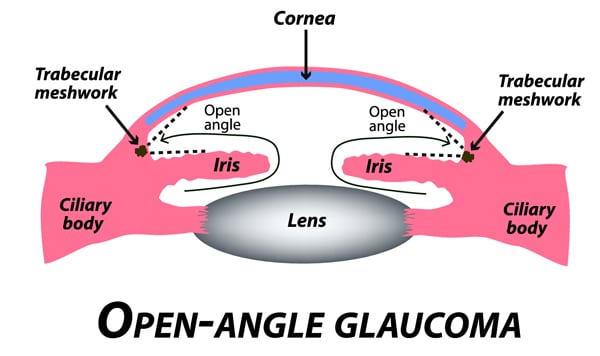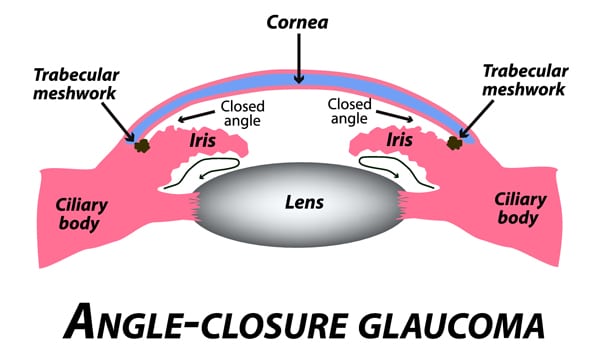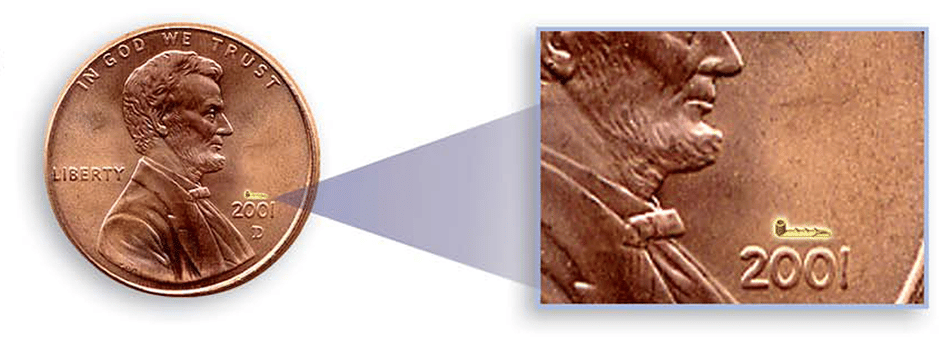Glaucoma
Glaucoma is an eye condition that can cause permanent vision loss if left untreated. At Eye Consultants of Northern Virginia, our eye doctors have the knowledge and expertise to detect and treat glaucoma to preserve your vision.
What Is Glaucoma, and What Are the Symptoms?

Glaucoma is a chronic progressive eye condition caused by damage to the optic nerve. The optic nerve is responsible for sending signals from the retina, the light-sensitive tissue at the back of the eye, to the brain to produce an image.
Damage to the optic nerve is often caused by increased eye pressure. This damage to the optic nerve causes vision loss, usually beginning in the peripheral vision.
There are many different types of glaucoma. At Eye Consultants of Northern Virginia, our eye doctors specialize in glaucoma treatment for all types of glaucoma.
Some of the most common types of glaucoma are:
Open-Angle Glaucoma

Your eye is constantly creating fluid. In order to maintain healthy eye pressure, this fluid must exit the eye at a consistent rate.
To exit the eye, this fluid takes a specific pathway. First, the fluid flows through the eye’s angle, which is located between the iris, cornea, and sclera.
After traveling through the angle, it enters the drainage canal called the trabecular meshwork to exit the eye. When there is a blockage or clog in this drainage canal, the fluid cannot leave the eye consistently and sufficiently.
In open-angle glaucoma, the fluid can easily maneuver through the angle but is halted when passing through the trabecular meshwork. When this fluid cannot leave the eye in a timely and sufficient manner, the intraocular eye pressure will rise.
If this pressure stays high, it will damage the optic nerve and cause vision loss. Open-angle glaucoma often causes gradual vision loss, typically starting in the peripheral vision.
Besides gradual vision loss, open-angle glaucoma often does not cause many noticeable symptoms. For this reason, it is essential to visit your eye doctor routinely to ensure that glaucoma is not damaging your vision.
Narrow-Angle or Angle-Closure Glaucoma

In those who have narrow-angle glaucoma, the angle of the eye is very narrow. In this case, the fluid struggles to get through the angle to the drainage canal to exit the eye.
Similar to open-angle glaucoma, narrow-angle glaucoma can cause gradual vision loss over time. However, if this angle narrows suddenly and completely closes off the fluid’s access to the drainage channel, this is called angle-closure glaucoma.
Narrow-angle glaucoma is often manageable with treatment. Without treatment, narrow-angle glaucoma can cause gradual vision loss or become angle-closure glaucoma.
In angle-closure glaucoma, vision can be lost quickly if not treated right away. Angle-closure glaucoma, in contrast to open-angle glaucoma and many other types of glaucoma, may present many symptoms.
Those experiencing acute angle closure may have headaches, eye pain, and halos around lights. In addition, acute angle-closure glaucoma may cause nausea and vomiting.
Angle-closure is considered to be an ophthalmic emergency, as it can quickly cause permanent vision loss if left untreated.
Normal-Tension Glaucoma
In some cases, you may still have glaucoma if your eye pressure is considered normal. Those who have an eye pressure within the normal range but are still experiencing damage to the optic nerve due to eye pressure have a type of glaucoma called normal-tension glaucoma.
Although eye pressure may not be abnormally high in cases of normal-tension glaucoma, the eye pressure is still too high for the eye to function adequately. Normal-tension glaucoma often causes slow and gradual vision loss.
Besides vision loss, there are not many other noticeable symptoms of normal-tension glaucoma. Your eye doctor can diagnose normal-tension Glaucoma and all other types of glaucoma during your routine eye exams.
If you are diagnosed with glaucoma, your eye doctor can develop a treatment plan to prevent further vision loss.
Who Is Most At-Risk for Developing Glaucoma?

Many factors can contribute to someone developing glaucoma. In some cases, glaucoma may develop without a specific cause.
If you have a family history of glaucoma, you will likely be more likely to develop the condition. Like many other eye conditions, your risk of developing glaucoma increases with age.
Some other factors that may make you at higher risk for glaucoma include:
- High blood pressure
- Long-term use of corticosteroids
- Previous eye surgeries or injuries
- Farsightedness
If you have any of these factors, it does not necessarily mean that you will develop glaucoma. The best way to determine if you are at risk for developing glaucoma is to visit your eye doctor for routine eye exams.
How Do Eye Doctors Treat Glaucoma?
To determine the best treatment plan for each person with glaucoma, eye doctors consider the type and severity of the condition. At Eye Consultants of Northern Virginia, our glaucoma specialists treat glaucoma using the following methods:
Medications
Once first diagnosed, eye doctors will often begin the treatment of glaucoma with medicated eye drops. Prescription eye drops aim to help lower eye pressure, either by increasing the outflow or decreasing fluid production.
SLT
In some cases, eye doctors may recommend a laser procedure to help improve eye pressure. At Eye Consultants of Northern VA, our glaucoma specialists perform a laser procedure called a selective laser trabeculoplasty, or SLT.
The SLT is an in-office procedure that aims to increase the outflow of fluid by creating an opening in the drainage channel. In some cases, eye doctors may use SLT to treat glaucoma in conjunction with medicated eye drops or if medicated eye drops do not sufficiently lower eye pressure.
MIGS
In some cases, surgery is necessary to improve eye pressure and prevent vision loss. At Eye Consultants of Northern Virginia, our glaucoma specialists offer minimally invasive glaucoma surgery, or MIGS, to treat glaucoma.
Compared to traditional glaucoma, MIGS procedures cause much less damage to surrounding structures, and they are much easier to recover from. At Eye Consultants of Northern Virginia, our glaucoma specialists offer various MIGS procedures.
Some of the MIGS procedures offered at Eye Consultants of Northern Virginia are:
iStent
The iStent is an implantable MIGS device that eye doctors use to help increase the outflow of fluid and regulate eye pressure.

Kahook Dual Blade
The Kahook Dual Blade is a device that eye doctors use during a MIGS procedure to create an opening in the trabecular meshwork. Once there is an opening in the trabecular meshwork, fluid is able to flow out of the eye more efficiently, and the eye pressure is reduced.
XEN Gel Stent
The XEN Gel Stent is another device implanted during a MIGS procedure to improve eye pressure in those who have open-angle glaucoma. During this procedure, your eye doctor inserts this stent into the drainage canal to allow for another pathway for the fluid to exit the eye.
Hydrus Microstent
Like other stents, the Hydrus Microstent is a MIGS device that eye doctors use to create an additional drainage channel for fluid to exit the eye. Instead of taking the traditional route through the blocked trabecular meshwork, the fluid now has an alternate way to leave the eye.
OMNI
The OMNI surgical system is an implant-free device used during a MIGS procedure to target all three resistance points in the traditional outflow pathway. Using the OMNI surgical system, your eye doctor can open up the outflow pathway to increase fluid drainage and improve eye pressure.
